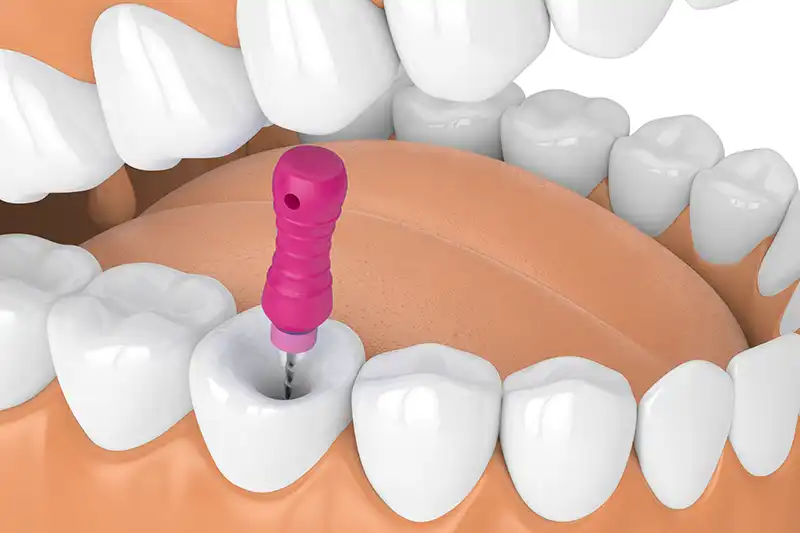When it comes to dental procedures, few are as misunderstood and feared as the root canal. Images of excruciating pain and horror stories have given this essential dental treatment a bad reputation. However, it’s time to set the record straight. Root canals are a common and valuable dental procedure designed to save teeth and alleviate pain.
What is a Root Canal?
A root canal, formally known as endodontic therapy, is a dental procedure aimed at treating infections or damage within the pulp of a tooth. The pulp is the innermost part of a tooth, consisting of blood vessels, nerves, and connective tissue. When the pulp becomes infected or damaged, it can cause severe pain and lead to more serious oral health issues.
The primary goal of a root canal is to remove the infected or damaged pulp, clean the inside of the tooth thoroughly, and then seal it to prevent further infection. By doing so, the dentist can save the tooth and alleviate the patient’s pain, all while preserving their natural smile.
When Might Someone Need a Root Canal?
Severe Toothache: The most common sign that someone may need a root canal is experiencing a severe toothache, especially when chewing or applying pressure to the tooth. This pain typically intensifies over time and can be accompanied by sensitivity to hot or cold temperatures.
Prolonged Sensitivity: If a tooth remains sensitive to hot or cold temperatures long after the source of the stimulus has been removed, it could indicate pulp damage. This sensitivity can be a warning sign that a root canal may be necessary.
Swollen Gums: Swelling or tenderness in the gums around a specific tooth can be a sign of infection within the tooth’s pulp. In some cases, you may even notice a pimple-like bump on the gums near the affected tooth.
Discoloration of the Tooth: A tooth that has become discolored, typically turning dark gray or brown, may indicate pulp damage. The change in color is a result of the death of the pulp tissue inside the tooth.
Cracked or Chipped Tooth: Trauma or injury to a tooth can cause cracks or chips that expose the pulp. This can lead to infection and may necessitate a root canal to save the tooth.
Previous Dental Work: Teeth that have undergone multiple dental procedures, such as fillings or crowns, may be at a higher risk of needing a root canal in the future. Repeated dental work can weaken the tooth’s structure and make it more susceptible to infection.
X-ray Findings: Dentists often use X-rays to diagnose dental issues, including problems with the pulp. If an X-ray reveals signs of infection or damage to the pulp, a root canal may be recommended.
The Root Canal Procedure
The idea of a root canal may sound intimidating, but the procedure is not as dreadful as it is often portrayed. Here is a brief overview of what to expect during a typical root canal:
Diagnosis: The first step is a thorough examination by a dentist or endodontist. They will assess the tooth’s condition, possibly using X-rays to determine the extent of the damage or infection.
Anesthesia: Before the procedure begins, the dentist will administer local anesthesia to ensure the patient is comfortable and pain-free throughout the process.
Access Opening: The dentist will create a small access hole in the top of the tooth to reach the pulp chamber.
Pulp Removal: Using specialized instruments, the dentist will carefully remove the infected or damaged pulp tissue.
Cleaning and Shaping: The interior of the tooth is then cleaned and shaped to prepare it for filling.
Filling and Sealing: Once cleaned, the tooth’s interior is filled with a biocompatible material called gutta-percha, and the access hole is sealed to prevent further infection.
Restoration: In many cases, a tooth that has undergone a root canal will require a crown to restore its strength and appearance fully. The dentist will take impressions of the tooth to create a custom crown, which is usually placed in a subsequent appointment.
Post-Root Canal Care
After a root canal, it’s essential to follow your dentist’s instructions for care and recovery. This typically involves maintaining good oral hygiene practices, avoiding chewing on hard or sticky foods, and attending any follow-up appointments to monitor the tooth’s healing progress.
A root canal is a valuable dental procedure designed to save a tooth and alleviate pain caused by pulp infection or damage. By addressing the misconceptions surrounding root canals and understanding the signs that may indicate the need for one, patients can make informed decisions about their oral health. If you ever experience severe tooth pain or any of the symptoms mentioned above, don’t delay seeking professional dental care—your dentist can help determine if a root canal is the right course of action to restore your oral health and preserve your natural smile.
Prioritize Your Dental Health
A healthy life starts with a healthy smile. Neglecting to take care of your dental health can lead to painful, expensive, and irreversible damage to your smile. Our dentists Dr. Brian L. Porter or Dr. Kelley Joo, work with patients to help them take charge of their dental health. Schedule your dental check-up by reaching out to Brian L. Porter, DDS at 281-422-3415 today.
Brian L. Porter, DDS
1109 E. James Ave.
Baytown, TX 77520
281-422-3415
View our Google Business Listing

